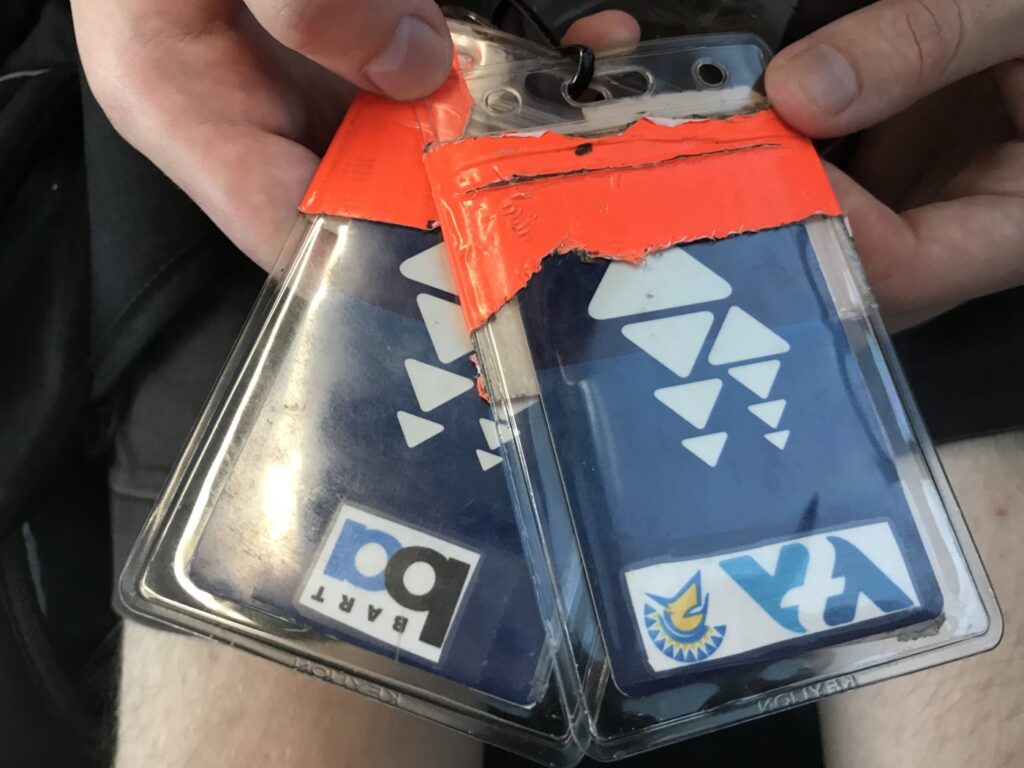In an unexpected turn of events, Bay Area public transit riders were treated to free rides on Tuesday morning due to a Clipper Card system malfunction. The glitch coincided with a scheduled fare increase, leaving many commuters pleasantly surprised as they embarked on their morning journeys.
The fare hikes, intended to bolster revenue for financially struggling transit agencies, were set to increase by 25 cents for Caltrain, Golden Gate Ferry, Golden Gate Transit, and AC Transit, while Muni fares were to rise by 10 cents. However, the technical hiccup allowed riders to bypass these new rates, at least temporarily.
Impact on Transit Agencies
The fare increases were a strategic move to address the financial challenges faced by Bay Area transit agencies. These organizations have been grappling with a persistent decline in ridership since the pandemic, coupled with rising operational costs and the need for infrastructure improvements.
“There is never a good time to have a problem like this one,” remarked John Goodwin, spokesperson for the Metropolitan Transportation Commission. “Given the revenue environment facing so many of the Bay Area transit agencies, this is an especially inopportune time.”
Root Cause of the Glitch
The exact cause of the Clipper Card system failure remains unclear. However, Goodwin suggested that the issue might be linked to the process of inputting the new fare structures into the system, which is managed by Cubic Corporation, a San Diego-based firm. The glitch was first reported around 5 a.m., although transit employees may have noticed it earlier.
Cubic Corporation responded swiftly, rolling out a fix by approximately 10:30 a.m. across several systems, including BART, AC Transit, and Golden Gate Ferry.
Financial Implications
While the Clipper Card system was down, transit agencies independently opted to continue operations without charging riders. Signs were placed over Clipper Card readers, gates were left open, and transit employees encouraged passengers to board without paying.
Goodwin was unable to provide an estimate of the revenue lost during the glitch but noted that Tuesdays, Wednesdays, and Thursdays typically see the highest ridership. “It raises questions about how the transit agencies will be reimbursed for that lost revenue,” he stated.
By the Numbers: The fare increase was set to generate significant additional revenue for transit agencies, which have struggled with a 30% decline in ridership since the pandemic began.
Historical Context and Comparisons
Systemwide glitches are not unprecedented, but Goodwin emphasized that nothing of this magnitude has occurred before. Past incidents have typically been isolated and quickly resolved, minimizing financial impact.
Historically, transit systems have faced challenges with fare collection technology. In 2018, a similar issue occurred in New York City when a software update caused widespread disruptions across the MetroCard system, leading to free rides for commuters.
Looking Ahead
As the Clipper Card system returns to normal, commuters should expect to pay the increased fares for their afternoon rides home. Meanwhile, transit agencies are likely to seek solutions to prevent future disruptions and explore options for recovering lost revenue.
The incident underscores the critical role of technology in modern transit systems and highlights the need for robust contingency plans. As agencies work to regain financial stability, ensuring reliable fare collection systems will be paramount.
The Bay Area’s transit landscape continues to evolve, with agencies striving to balance operational demands with the financial realities of a post-pandemic world. The lessons learned from this glitch may inform future strategies for maintaining service reliability and financial health.
About The Author
 Rising Demand for Tech Solutions in Real Estate Market Revealed in New Report
Rising Demand for Tech Solutions in Real Estate Market Revealed in New Report Elon Musk Takes Charge of Tesla’s European Sales Amid Market Challenges
Elon Musk Takes Charge of Tesla’s European Sales Amid Market Challenges Archer Aviation Stock Declines Amidst Recent Regulatory Optimism
Archer Aviation Stock Declines Amidst Recent Regulatory Optimism Cities Sue Trump Administration Over Obamacare Enrollment Changes
Cities Sue Trump Administration Over Obamacare Enrollment Changes AI Revolution: Transforming Small and Medium Businesses
AI Revolution: Transforming Small and Medium Businesses